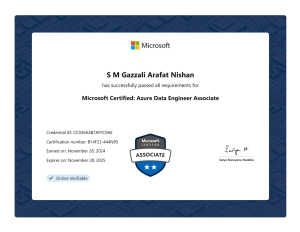Are you working with computer architecture simulations and looking to enhance your workflow with gem5? One of the essential features you can leverage is the CPT Upgrade. This guide provides a detailed, step-by-step approach on how to use CPT Upgrade in gem5, ensuring you optimize your simulation processes effectively.
gem5 and CPT Upgrade
gem5 is a versatile open-source simulation platform widely used in computer-system architecture research. It allows users to model and analyze the performance of computer systems at various levels of detail, from high-level system simulations to detailed processor microarchitecture.
What is CPT Upgrade?
CPT Upgrade refers to the process of managing and updating checkpoints within gem5 simulations. Checkpoints are snapshots of the simulation state at a specific point in time. Upgrading these checkpoints ensures that your simulations remain efficient and can be resumed or analyzed without restarting from scratch.
Benefits of Using CPT Upgrade:
- Time Efficiency: Resume simulations without restarting, saving valuable time.
- Performance Analysis: Analyze system performance at specific checkpoints.
- Flexibility: Modify and upgrade simulation parameters without losing progress.
Setting Up Your gem5 Environment
Before you can use CPT Upgrade in gem5, it’s crucial to set up your environment correctly. Follow these steps to get started.
Prerequisites
- Operating System: Linux-based distributions (e.g., Ubuntu, Fedora) are recommended.
- Dependencies: Ensure you have the following installed:
pythonsconsgit- Required libraries (e.g.,
zlib,protobuf)
Installation Steps
- Clone the gem5 Repository:
Open your terminal and run:
bashgit clone https://gem5.googlesource.com/public/gem5
cd gem5
- Build gem5:
Choose the appropriate build target. For example, to build for the X86 architecture:
bashscons build/X86/gem5.opt -j$(nproc)
build/X86/gem5.opt: Specifies the build target.-j$(nproc): Utilizes all available CPU cores for faster compilation.
- Verify Installation:
Run a simple test to ensure gem5 is installed correctly:
bashbuild/X86/gem5.opt configs/example/se.py --help
You should see the help menu for the simulation script, indicating a successful installation.
Creating a Checkpoint (CPT) in gem5
Creating a checkpoint allows you to save the current state of your simulation. Here’s how to do it.
Step-by-Step Guide
- Prepare Your Simulation Script:
Use one of gem5’s configuration scripts or create your own. For example,
se.pyis commonly used for syscall emulation. - Enable Checkpointing in the Script:
Modify your simulation script to include checkpointing parameters. Add the following lines:
python# Set the checkpoint directory
root.checkpoint_dir = "path/to/checkpoint_dir"# Specify the frequency of checkpoints (e.g., every 1000 ticks)
root.checkpoint_frequency = 1000# Enable checkpointing
root.dumpCheckpoints = True
- Run the Simulation:
Execute the simulation with the modified script:
bashbuild/X86/gem5.opt configs/example/se.py --cmd=your_program --options="your_options"
Replace
your_programandyour_optionswith the specific program and options you intend to simulate. - Monitor Checkpoint Creation:
gem5 will create checkpoints in the specified directory at the defined frequency. You can navigate to the
checkpoint_dirto view the created checkpoints.
Example Table: Checkpoint Parameters
| Parameter | Description | Example Value |
|---|---|---|
checkpoint_dir |
Directory to store checkpoints | "./checkpoints/" |
checkpoint_frequency |
Interval at which checkpoints are saved | 1000 ticks |
dumpCheckpoints |
Enable or disable checkpointing | True |
Upgrading Checkpoints (CPT Upgrade)
Upgrading checkpoints ensures that your simulations remain up-to-date with the latest configurations and improvements.
How to Upgrade a Checkpoint
- Identify the Checkpoint to Upgrade:
Locate the checkpoint directory you wish to upgrade. For example:
bash./checkpoints/checkpoint_1000
- Update gem5 to the Latest Version:
Ensure you’re using the latest version of gem5 to benefit from recent updates and bug fixes.
bashcd gem5
git pull
scons build/X86/gem5.opt -j$(nproc)
- Apply Configuration Changes:
If you’ve made changes to your simulation parameters or scripts, ensure they are compatible with the existing checkpoint.
- Resume Simulation from the Upgraded Checkpoint:
Use the updated gem5 build to resume from the checkpoint.
bashbuild/X86/gem5.opt -rebuild --checkpoint-dir=./checkpoints/checkpoint_1000 configs/example/se.py --cmd=your_program --options="your_options"
-rebuild: Tells gem5 to rebuild the simulation state from the checkpoint.
Example Table: Upgrading Steps
| Step | Action | Command Example |
|---|---|---|
| 1 | Identify checkpoint directory | ./checkpoints/checkpoint_1000 |
| 2 | Update gem5 repository | git pull followed by scons build/X86/gem5.opt -j$(nproc) |
| 3 | Apply configuration changes | Modify simulation scripts as needed |
| 4 | Resume simulation from checkpoint | build/X86/gem5.opt -rebuild --checkpoint-dir=... |
Managing Multiple Checkpoints
Efficiently managing multiple checkpoints can streamline your simulation workflow.
Tips for Managing Checkpoints
- Organize Checkpoints:
- Use descriptive names for your checkpoint directories, such as
checkpoint_1000,checkpoint_2000, etc.
- Use descriptive names for your checkpoint directories, such as
- Automate Checkpoint Creation:
- Create scripts to automate the creation and management of checkpoints based on your simulation needs.
- Regular Maintenance:
- Periodically review and delete outdated or unnecessary checkpoints to save disk space.
Example Table: Checkpoint Organization
| Checkpoint Name | Description | Usage Scenario |
|---|---|---|
checkpoint_1000 |
Checkpoint at 1000 simulation ticks | Baseline simulation state |
checkpoint_2000 |
Checkpoint at 2000 simulation ticks | After initial performance tuning |
checkpoint_final |
Final simulation state | For comprehensive analysis |
Restoring from a Checkpoint
Restoring a simulation from a checkpoint can save significant time, especially for long-running simulations.
Steps to Restore
- Locate the Desired Checkpoint:
Ensure you have the correct path to the checkpoint directory, such as
./checkpoints/checkpoint_1000. - Run gem5 with the Checkpoint:
Use the
-rebuildflag to resume the simulation from the checkpoint.bashbuild/X86/gem5.opt -rebuild --checkpoint-dir=./checkpoints/checkpoint_1000 configs/example/se.py --cmd=your_program --options="your_options"
- Verify the Restoration:
Check the simulation logs and outputs to ensure the simulation has resumed correctly from the checkpoint.
Example Table: Restoration Steps
| Step | Action | Command Example |
|---|---|---|
| 1 | Locate checkpoint directory | ./checkpoints/checkpoint_1000 |
| 2 | Run gem5 with checkpoint | build/X86/gem5.opt -rebuild --checkpoint-dir=... |
| 3 | Verify simulation restoration | Check logs and output files |
Best Practices for Using CPT Upgrade
Adhering to best practices ensures smooth and efficient use of CPT Upgrade in gem5.
Recommended Practices
- Consistent Configuration:
- Maintain consistent simulation configurations when upgrading checkpoints to avoid compatibility issues.
- Regular Checkpointing:
- Create checkpoints at regular intervals to minimize data loss in case of interruptions.
- Backup Checkpoints:
- Keep backups of critical checkpoints to prevent data loss due to corruption or accidental deletion.
- Version Control:
- Use version control systems (e.g., Git) for your simulation scripts and configurations to track changes alongside checkpoints.
Example Table: Best Practices
| Practice | Description |
|---|---|
| Consistent Configuration | Ensure simulation parameters remain unchanged during upgrades |
| Regular Checkpointing | Create checkpoints at defined intervals (e.g., every 1000 ticks) |
| Backup Checkpoints | Store copies of important checkpoints in separate storage locations |
| Version Control | Use Git or similar tools to manage simulation script versions |
Troubleshooting Common Issues
While using CPT Upgrade in gem5, you might encounter some common issues. Here’s how to address them.
Checkpoint Not Creating
- Verify Permissions:
- Ensure gem5 has write permissions to the checkpoint directory.
- Check Configuration:
- Confirm that checkpointing is correctly enabled in your simulation script.
- Monitor Resources:
- Ensure there is sufficient disk space for creating checkpoints.
Simulation Fails to Restore from Checkpoint
- Version Mismatch:
- Ensure that the gem5 version used to create the checkpoint matches the one used for restoration.
- Corrupted Checkpoint Files:
- Verify the integrity of checkpoint files. Recreate checkpoints if necessary.
- Configuration Inconsistencies:
- Ensure that all simulation parameters are consistent with those at the checkpoint time.
Example Table: Troubleshooting Steps
| Issue | Possible Cause | Solution |
|---|---|---|
| Checkpoint Not Creating | Insufficient permissions | Grant write permissions to checkpoint directory |
| Incorrect checkpoint configuration | Verify and correct checkpoint settings in the script | |
| Lack of disk space | Free up disk space or choose a different storage location | |
| Simulation Fails to Restore | gem5 version mismatch | Update gem5 to the version used for checkpoint creation |
| Corrupted checkpoint files | Recreate the checkpoint | |
| Inconsistent simulation parameters | Ensure simulation parameters match those at checkpoint time |
Summary
In this guide, we’ve explored how to use CPT Upgrade in gem5, covering the following key points:
- Introduction to gem5 and CPT Upgrade: Understanding the basics and benefits.
- Setting Up Your gem5 Environment: Installing and verifying gem5.
- Creating a Checkpoint: Steps to create and configure checkpoints.
- Upgrading Checkpoints: How to upgrade and manage existing checkpoints.
- Managing Multiple Checkpoints: Organizing and maintaining multiple checkpoints efficiently.
- Restoring from a Checkpoint: Steps to resume simulations from checkpoints.
- Best Practices: Ensuring consistent and efficient use of CPT Upgrade.
- Troubleshooting: Addressing common issues encountered during checkpointing.
By following these steps and best practices, you can effectively utilize CPT Upgrade in gem5 to enhance your simulation workflows, save time, and improve the accuracy of your computer architecture research.
Conclusion
Mastering how to use CPT Upgrade in gem5 can significantly improve your simulation processes, offering flexibility and efficiency. Whether you’re pausing and resuming simulations, analyzing performance at specific checkpoints, or managing multiple simulation states, CPT Upgrade is an invaluable feature in gem5. By setting up your environment correctly, following the best practices, and knowing how to troubleshoot common issues, you can make the most out of gem5’s powerful simulation capabilities.
Frequently Asked Questions (FAQs) on How to Use CPT Upgrade in gem5
1. What is CPT Upgrade in gem5 and why is it important?
CPT Upgrade in gem5 refers to the process of managing and updating checkpoints within your gem5 simulations. Checkpoints are snapshots of the simulation’s state at specific points in time, allowing you to pause and resume simulations without starting from scratch. Upgrading these checkpoints ensures that your simulations remain efficient, up-to-date with the latest configurations, and free from potential errors. This feature is crucial for long-running simulations, performance analysis, and iterative development in computer architecture research.
2. How do I create a checkpoint before performing a CPT Upgrade in gem5?
To create a checkpoint before performing a CPT Upgrade in gem5, follow these steps:
- Prepare Your Simulation Script:
- Use a configuration script like
se.pyfor syscall emulation or create a custom script.
- Use a configuration script like
- Enable Checkpointing in the Script:
- Add the following lines to specify checkpoint parameters:
python
root.checkpoint_dir = "path/to/checkpoint_dir"
root.checkpoint_frequency = 1000 # e.g., every 1000 ticks
root.dumpCheckpoints = True
- Add the following lines to specify checkpoint parameters:
- Run the Simulation:
- Execute the simulation with the modified script:
bash
build/X86/gem5.opt configs/example/se.py --cmd=your_program --options="your_options"
- Execute the simulation with the modified script:
- Verify Checkpoint Creation:
- Navigate to the specified
checkpoint_dirto ensure checkpoints are being created at the defined intervals.
- Navigate to the specified
Creating a checkpoint is a fundamental step to ensure that you have a reliable state to upgrade later.
3. What are the steps to perform a CPT Upgrade in gem5 after updating the gem5 version?
To perform a CPT Upgrade in gem5 after updating the gem5 version, follow these steps:
- Update gem5 to the Latest Version:
- Navigate to your gem5 directory and pull the latest updates:
bash
cd gem5
git pull
scons build/X86/gem5.opt -j$(nproc)
- Navigate to your gem5 directory and pull the latest updates:
- Locate the Existing Checkpoint:
- Identify the checkpoint directory you intend to upgrade, for example:
bash
./checkpoints/checkpoint_1000
- Identify the checkpoint directory you intend to upgrade, for example:
- Apply Configuration Changes if Necessary:
- Ensure that any changes in your simulation parameters are compatible with the existing checkpoint.
- Resume Simulation from the Upgraded Checkpoint:
- Use the updated gem5 build to resume the simulation:
bash
build/X86/gem5.opt -rebuild --checkpoint-dir=./checkpoints/checkpoint_1000 configs/example/se.py --cmd=your_program --options="your_options"
- Use the updated gem5 build to resume the simulation:
- Verify the Upgrade:
- Check the simulation logs and outputs to confirm that the upgrade was successful and the simulation resumed correctly.
Following these steps ensures that your CPT Upgrade in gem5 is performed smoothly, leveraging the latest features and fixes.
4. Can I manage multiple checkpoints when using CPT Upgrade in gem5, and how?
Yes, you can manage multiple checkpoints when using CPT Upgrade in gem5. Managing multiple checkpoints allows you to maintain various states of your simulation for different purposes. Here’s how you can do it:
- Organize Checkpoints with Descriptive Names:
- Name your checkpoint directories based on simulation ticks or specific milestones, such as
checkpoint_1000,checkpoint_2000, etc.
- Name your checkpoint directories based on simulation ticks or specific milestones, such as
- Automate Checkpoint Creation:
- Use scripts to create and manage checkpoints at predefined intervals or simulation stages.
- Maintain a Directory Structure:
- Keep all checkpoints in a dedicated directory, for example:
bash
./checkpoints/
├── checkpoint_1000/
├── checkpoint_2000/
└── checkpoint_final/
- Keep all checkpoints in a dedicated directory, for example:
- Document Each Checkpoint:
- Keep a log or documentation detailing what each checkpoint represents and its significance in the simulation process.
- Regular Maintenance:
- Periodically review and clean up outdated or unnecessary checkpoints to conserve disk space and maintain organization.
By effectively managing multiple checkpoints, you enhance the flexibility and efficiency of your CPT Upgrade in gem5, allowing for easier resumption and analysis of simulations.
5. What are the common issues faced during CPT Upgrade in gem5 and how can I resolve them?
When working on how to use CPT Upgrade in gem5, you might encounter several common issues. Here are some of them and their solutions:
- Checkpoint Not Creating:
- Cause: Incorrect permissions or insufficient disk space.
- Solution:
- Ensure that gem5 has write permissions to the checkpoint directory.
- Verify that there is enough disk space to store the checkpoints.
- Simulation Fails to Restore from Checkpoint:
- Cause: Version mismatch between gem5 builds or corrupted checkpoint files.
- Solution:
- Make sure the gem5 version used for restoration matches the one used to create the checkpoint.
- Check the integrity of checkpoint files and recreate them if necessary.
- Configuration Inconsistencies:
- Cause: Changes in simulation parameters that are incompatible with the checkpoint.
- Solution:
- Maintain consistent simulation configurations when performing a CPT Upgrade.
- If changes are necessary, ensure they are compatible with the existing checkpoint state.
- Performance Issues After Upgrade:
- Cause: Inefficient checkpoint management or outdated configurations.
- Solution:
- Review and optimize checkpoint parameters.
- Update simulation scripts to align with the latest gem5 enhancements.
- Error Messages During Restoration:
- Cause: Missing dependencies or incorrect command usage.
- Solution:
- Verify that all required dependencies are installed.
- Ensure that the restoration commands are correctly formatted and include all necessary parameters.
Addressing these common issues will help you effectively manage and troubleshoot your CPT Upgrade in gem5, ensuring a smoother simulation experience.












